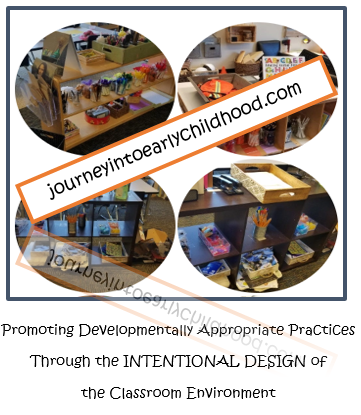What Do Your Walls Say to
Your Students and Families?
- What values do they speak?
- Do the items posted on the walls continue to enhance the children’s learning or have they simply become visual noise?
You decorated your room at the beginning of the year but…
- How do you make on-going decisions of what to put on your walls?
- How do you decide the image you want to continue to portray through your room environment?
- How are you demonstrating your values for how students learn through the displays on your walls?
- What image of the child are you projecting through your environment and the items that you make an intentional choice to hang and leave hanging on the walls?
As discussed in the last blog post regarding intentionally designed environments, it is critical that we examine the environment as a place for students and it should be a reflection of them.
Patricia Tarr in the article, Consider the Walls, talks about how commercially made posters, etc. that we hang for educational purposes may actually be limiting children’s sense of who they truly are and true capabilities and stifles their imagination and creativity. She states,
“So too does the mass of commercial stereotyped images silence the actual lived experiences of those individuals learning together. An overload of commercial materials leaves little room for work created by the children—another kind of silencing.” The challenge for early childhood educators is to think beyond decorating to consider how walls can be used effectively as part of an educational environment. In Reggio Emilia the walls display documentation panels of projects that children are engaged in. These become the basis of ongoing research and dialogue between the children, teachers, and families. Panels of photos, artifacts, and text make “learning visible” to participants and to outsiders (Rinaldi 2001).”
Think carefully about what pictures, children’s work, or photos you place on the walls. Students absorb a lot from their environment; so, we want to use the space for demonstrating both the learning and the process toward the learning. When determining what you are going to place on the walls, ponder
- is the item is important to your current educational goals and objectives (is it an old objective and now can be removed from the walls? can a picture be taken of an old anchor chart and placed in 8×10 binder for reference as needed? can anchor charts be hung on pants hangers and hung in a corner of the room for reference as needed?)
- how can the items be created by the students instead of commercially or by the teacher (co-creating items helps students to have ownership and therefore, they are more likely to look at and use the resource often)
- does it demonstrate beauty and is it aesthetically pleasing (note: it does not have to be “pinterest” worthy perfect- if it is created or co-created by the students and meets their needs as a resource for a learning objective- then it is beautiful to them)

